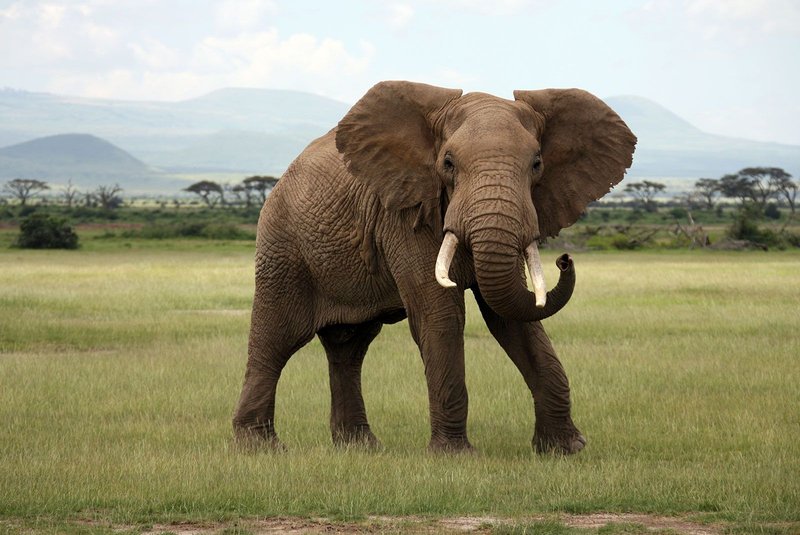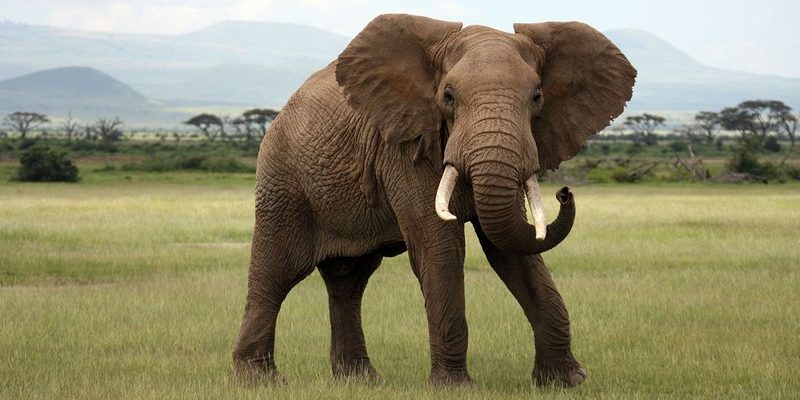
Let’s dive into the common myths surrounding these gentle giants. By clearing up some of the confusion, we can gain a better appreciation for these animals and the roles they play in their ecosystems. Kind of like peeling an onion—you keep uncovering layers, and as you do, you might shed a few tears, but what’s revealed is beautiful and complex.
Myth 1: African Bush Elephants Are Just Big Pale Mammoths
You might picture elephants as oversized versions of regular mammals, but that’s a pretty simplistic view. African Bush Elephants are their own unique species with distinct characteristics. They are the largest land animals on Earth, reaching up to 13 feet tall and weighing between 5,000 and 14,000 pounds.
These elephants aren’t just big; they also play a crucial role in their habitat. For example, their eating habits help maintain the savanna ecosystem. They consume vast amounts of vegetation, which helps to control plant growth and promote biodiversity. Without them, the landscape would look drastically different, potentially leading to overgrowth and a decrease in other species. So, when we think of elephants, it’s important to appreciate their impact on the environment beyond just their size.
Myth 2: Elephants Never Forget
You’ve probably heard the saying, “an elephant never forgets,” suggesting that elephants have perfect memories. While it’s true that elephants are intelligent and have strong memory capabilities, it’s a bit of an exaggeration. Elephants use their memory to navigate their complex social structures, find water sources, and communicate with other herd members.
Their memories help them recall specific places and relationships, which are vital for their survival. For instance, matriarchs—older female elephants—rely on their memories to guide their herds during migrations or to locate food. However, like all creatures, they can also forget some things over time, especially in changing environments. So, while they may have remarkable recall, it’s not infallible.
Myth 3: African Bush Elephants Are All Brown
You might think that elephants are just one shade: a plain brown. But here’s the thing—African Bush Elephants come in a variety of tones and colors depending on their environment. Their skin can appear gray, brown, or even reddish, depending on the types of soil and mud they roll in.
These mud baths serve a dual purpose. Not only do they help elephants cool off, but they also protect their skin from the sun and pesky insects. When you see an elephant caked in red soil, it’s not just a fun aesthetic—it’s part of their natural sunscreen. So, next time you spot one, take a moment to appreciate the unique color variations.
Myth 4: They Are Aggressive and Dangerous
It’s easy to assume that such massive creatures would be aggressive, but it’s important to understand their behavior. African Bush Elephants are generally peaceful animals. They prefer to avoid conflict and will often retreat if they feel threatened.
However, like any animal, they can be defensive, especially when protecting their young or their territory. When safari guides advise keeping a safe distance, it’s not just for our safety; it’s also about respecting the elephants’ space. They’re not out looking for trouble; they’re just trying to live their lives. In fact, observing elephants in their natural habitat reveals more about their nurturing and social behavior than their so-called aggression.
Myth 5: They Consume Only Grass
Many people assume that African Bush Elephants live solely on grasses, but their diet is much more diverse. In reality, they are herbivores that enjoy a variety of plants, including leaves, bark, fruits, and shrubs. It’s a buffet out there for them!
Their feeding habits can significantly affect their environment. When they strip bark from trees or push over small shrubs, they create openings for other species to thrive. This behavior not only sustains them but also promotes a healthier ecosystem. Imagine a gardener who prunes plants to encourage new growth—that’s the role of the elephant in its landscape!
Myth 6: They’re All the Same Size
When you think of elephants, you might picture a single, uniform size, but that couldn’t be further from the truth. African Bush Elephants have two subspecies: the African Forest Elephant and the African Savannah Elephant. These two types differ in size, build, and habitat.
The Savannah variety is larger, towering over their Forest cousins. The difference in size is crucial for their survival in their respective habitats. Larger elephants can cover more ground and access more resources in open savannas, while smaller ones can maneuver through dense forests. While they might belong to the same family, they have adapted uniquely to thrive in their environments.
Understanding the African Bush Elephant means unraveling layers of myths and misconceptions. These giants are more than just big animals with big memories; they are complex creatures that play vital roles in their ecosystems. From their varied diets to their diverse colors, elephants embody the beauty of adaptability and survival in the wild.
As we continue to learn about them, let’s appreciate their significance in our world. By recognizing the truth behind these myths, we not only enhance our understanding but also deepen our respect for the majestic African Bush Elephant. So, the next time you see an elephant, remember that there’s so much more to them than meets the eye.

